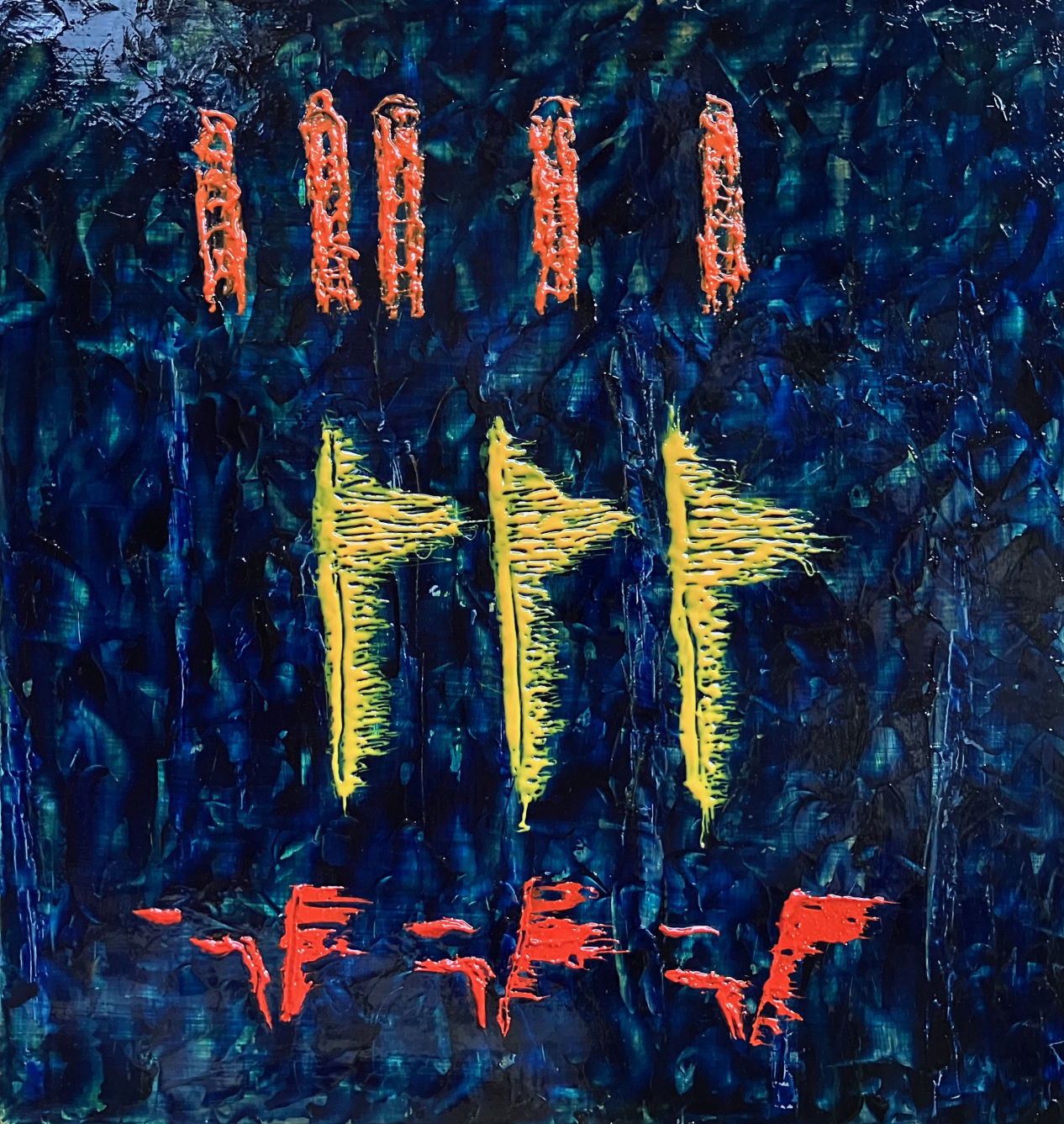
The First Song
oil on panel 42cm x 45cm, 2024
Stuart Inchley
$1000
Entered in the:
Stockyard Gallery - See The Song
Support our conservation work
For the Gang-gangs!

oil on panel 42cm x 45cm, 2024
Stuart Inchley
$1000
Entered in the:
Stockyard Gallery - See The Song
Support our conservation work
For the Gang-gangs!
This work, The First Song, emerges from a deep exploration of sound, ecology, and the relationship between art and conservation. Drawing on the rich tradition of birdsong as both a natural phenomenon and a symbolic representation of life’s cycles, the piece juxtaposes two pivotal moments: the first song and the last. These dualities are embodied within the visual representation of sonograms—scientific renderings of birdsong—recorded and meticulously analyzed by the artist as part of an ongoing conservation initiative at the Tarwin River Forest. The sonograms, captured using BirdNET's deep neural network machine learning algorithm, serve as both visual and auditory archives of the forest’s resident, transient and migratory birds.
The forests of South Gippsland are habitat for the Superb Lyrebird, arguably the worlds best singer and direct descendant of the worlds first songbird. The forests of eastern Australia are also thought to be the birthplace of the world’s first song - around 40 million years ago. The forests here are also home to the endangered Gang-gang Cockatoo and the Pilot Bird.
The sonograms transcend their scientific origins to become abstract symbols of fragility and resilience. Positioned above, the Gang-gang Cockatoo and below the Pilotbird, the “last song” resonates as an elegy for what is threatened, while the Lyrebirds “first song” reimagines a genesis, an aural origin of the forests enduring symphony.
The medium — oil on recycled timber --- underscores the work’s commitment to sustainability, reinforcing its conceptual foundations in renewal and ecological balance. The use of recycled materials parallels the artist’s conservation ethos, while the tactile, layered application of oil evokes the immersive experience of the dawn chorus: the rich, interwoven calls of the forest awakening.
This is not merely a visual artwork but an aural invocation. The sonograms, abstract yet evocative, invite viewers to hear through the eye and see through the ear, conjuring the forest’s calls at the break of day. The piece aspires to awaken not just the senses but also a collective consciousness toward the plight of threatened species. It insists that art, must serve a purpose: to inform, to inspire, and to act as a catalyst for the preservation of our shared world.
In The First Song, the artist seeks to embody the intersection of science and art, evoking the eternal interplay between the measurable and the ineffable, the fleeting and the enduring, the first and the last.
Recorded at the Tarwin River Forest 2024
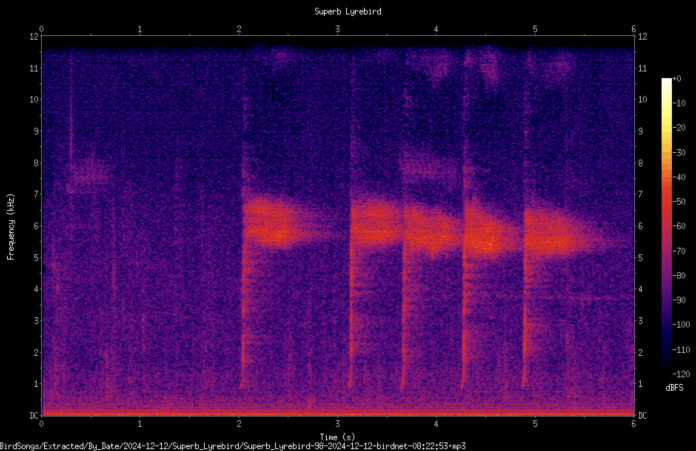
The first song birds originated in Australia nearly 40 million years ago and are close relatives of the ancient Lyrebird, considered a relict from the early Miocene
Epoche.
Numbers are declining, and the catastrophic fires of 2019-2020 burnt a large proportion of Lyrebird nesting habitat. This has Scientists thinking that their current status needs to be revised.
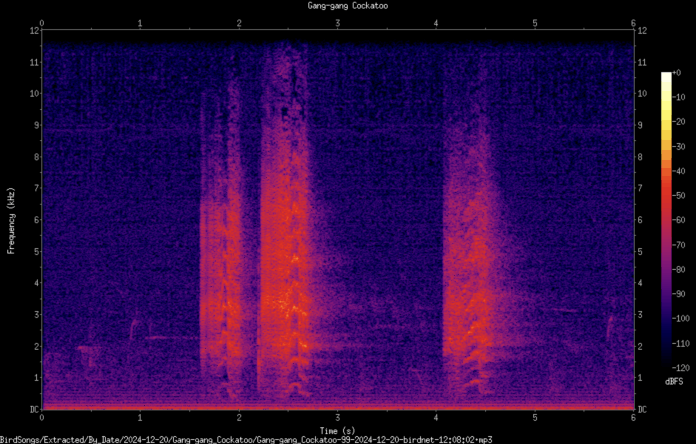
A special bird for us and one of the reasons we do what we do.
This sonogram looks like a the sound of a squeaky gate or a cork pulled from a bottle.
The sonogram above shows bands of multiple frequencies and resonances...contributing to their unique voice.
One of Australians favourite birds, now on the way to extinction.
Listed as endangered
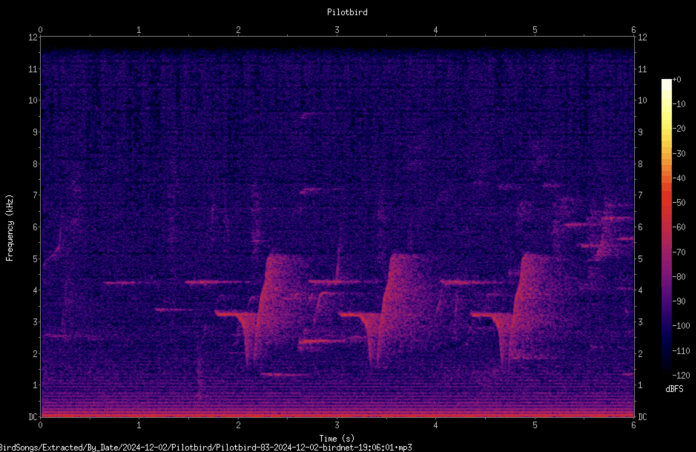
One of the loudest and sweetest calls of the forest. The pilotbird, like the Gang-gang and the Lyrebird, has suffered from having a large proportion of its habitat burnt in the black summer fires.
Pilotbirds are known to follow Lyrebirds, foraging in their wake, taking advantage of the subterranean snacks overturned by the Lyrebirds powerful legs.
Listed as vulnerable
BirdNET is a machine learning algorithm, utilizing a deep neural network, for the purpose of detection and classification of birds from audio files. It was created as a joint project of the K. Lisa Yang Center for Conservation Bioacoustics at the Cornell Lab of Ornithology, and Chemnitz University of Technology.
The BirdNet algorithm is run on a low cost, credit card sized micro-computer, the Raspberry Pi. BirdNET software is free and open-source. I added a battery pack (right) to make it portable and to get it out into the forest.
The highlight of 2024 was to record the Sacred kingfisher and the Channel-billed cuckoo!
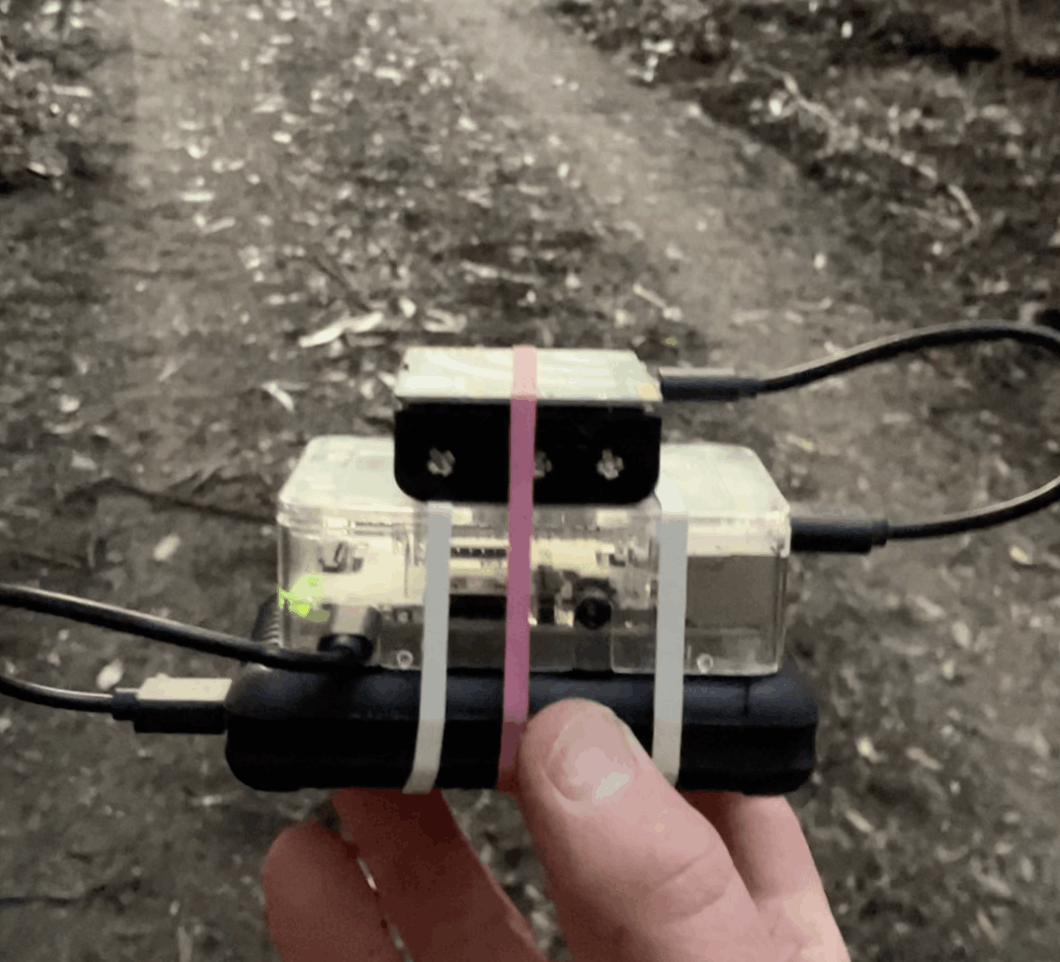
Offline Website Maker